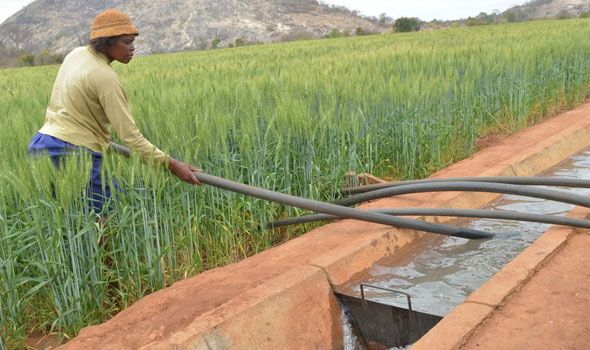NatFoods to put 5 000ha under winter wheat crop
National Foods Limited (NatFoods) says it intends to lay 5 000 hectares of land under the winter wheat crop this year through the company’s contract farming programme.
This comes as the Government is targeting 120 000ha of the cereal this year, taking into cognisance the El Nino drought, which destroyed the bulk of the summer crop this season.
Last year, NatFoods bought 40 000 tonnes of winter wheat from its contracted farmers.
The food manufacturing company established the contract farming unit, PHI, in 2011.
NatFoods expects to realise 40 000 to 50 000 tonnes of maize from the 2023-2024 summer cropping season after contracting farmers to set 5 200ha under the maize crop.
A total of 2400 ha were also put under soya crop in the same cropping season.
According to NatFoods, ramping up local wheat production is critical as the company is investing in more production lines that require wheat as a raw material.
The Government has set in place measures to drive winter wheat production to reduce imports as the country ultimately targets being a net importer of the cereal.
To cover deficits, especially in soft wheat, Zimbabwe imports from regional countries like South Africa and far-afield countries like Argentina and Russia.
Hard wheat is typically grown in arid regions and can withstand harsh environmental conditions, while soft wheat is usually grown in more temperate climates and has a shorter growing season. Despite these differences, both hard and soft wheat are important crops that play a vital role in the bakery industry.
The narrative is however, being changed through Government and private sector initiatives to increase local production of the cereal.
Addressing the media during a tour of NatFoods recently, group chief executive officer Mr Michael Lashbrook said he was optimistic about a successful winter wheat season this year.
“… through our PHI contract farming scheme, our winter wheat crop will be planted on about 5 000 hectares. The crop is just getting planted now and I have seen numbers that look quite positive.
“Improvement in local wheat production in recent years has been a welcome development and it is important to us because we are backing our future of growing wheat here by investing in pasta, so it is really important to us.
“Last season we bought about 40 000 tonnes from our growers,” said Mr Lashbrook.
From the private sector side, CBZ Agroyield is targeting 11 500 hectares, NMBZ 2 500 hectares, AFC land bank 16 000 hectares, ARDA will put 43 000 hectares under the cereal crop in a joint venture with an unnamed entity and will go it alone for the 2 000 ha of the crop on its estates.
In 2023 Zimbabwe planted 90 192 ha of the winter crop from 80 883 ha in 2022, 66 000 ha and 45 000 ha in 2021 and 2020 respectively.
The country realised 467 905 tonnes of the cereal in 2023 from 375 000 tonnes harvested in 2022.
The Government is determined to reinforce its agriculture sector initiatives as it continues to make deliberate efforts towards the country’s food self-sufficiency goal.
The initiative is expected to be driven through the cooperation of private sector contractors whom the Government has integrated to support at least 40 percent production of their raw material requirements from local production.
National blueprint, NDS 1 seeks to grow food self-sufficiency from the current level of 45 percent to 100 percent and reduce food insecurity from the 2020 peak of 59 percent to less than 10 percent by 2025.-newsday











